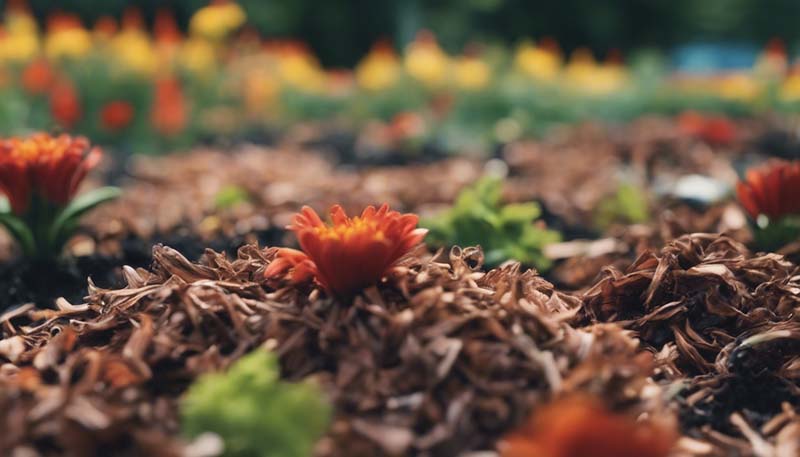The Role of Mulch in Seasonal Flower Gardening
Maintenance | 2024-03-31
The Role of Mulch in Seasonal Flower Gardening
Mulch is an essential component in the maintenance and care of seasonal flower gardens. It offers a variety of benefits that contribute to the health and beauty of your garden throughout the year. In this article, we will explore the role of mulch in seasonal flower gardening, its different types, and how to apply it effectively.
Introduction to Mulch
Mulch is a material applied as a layer on the surface of the soil around plants. It serves multiple purposes, including weed control, moisture retention, temperature regulation, and improving soil health. For seasonal flower gardens, mulch plays a crucial role in ensuring the plants have the best possible environment to grow and thrive.
Benefits of Mulch in Seasonal Flower Gardening
1. Weed Control
Mulch acts as a barrier between the soil and sunlight, preventing weed seeds from germinating. This reduces the number of weeds that can compete with your flowers for nutrients and water.
2. Moisture Retention
Mulch helps to retain moisture in the soil by reducing evaporation. This is particularly important in seasonal gardens where watering may be less frequent during certain times of the year.
Advertisement
3. Temperature Regulation
Seasonal flowers can be sensitive to temperature fluctuations. Mulch helps to insulate the soil, keeping it cooler in the summer and warmer in the winter, providing a more stable environment for plant growth.
4. Improved Soil Health
Over time, mulch breaks down and adds organic matter to the soil. This improves soil structure, fertility, and promotes the growth of beneficial microorganisms.
5. Aesthetic Appeal
Mulch can enhance the visual appeal of your garden by providing a neat, finished look. It can also help to suppress soil splashes on the stems and leaves of your flowers, reducing the risk of disease.
Types of Mulch
There are several types of mulch available, each with its own set of benefits and drawbacks. Some of the most common types include:
1. Organic Mulch
Organic mulch is made from plant materials such as wood chips, bark, straw, or shredded leaves. It breaks down over time, adding nutrients to the soil and improving its structure.
2. Inorganic Mulch
Inorganic mulch, such as rubber or stone, does not break down and provide nutrients to the soil. However, it offers long-lasting weed control and can be more visually appealing in certain garden styles.
3. Living Mulch
Living mulch refers to plants used as a ground cover, such as clover or creeping thyme. These plants can help to suppress weeds, retain moisture, and add organic matter to the soil.
How to Apply Mulch in Seasonal Flower Gardens
1. Choose the Right Mulch
Select a mulch type that suits your garden's needs and aesthetic preferences. Consider factors such as the climate, the types of plants in your garden, and the desired appearance.
2. Prepare the Garden Bed
Before applying mulch, prepare the garden bed by removing any weeds or debris. Loosen the soil slightly and water the area to ensure good contact between the mulch and the soil.
3. Apply the Mulch
Spread the mulch evenly over the soil surface, leaving a small gap around the base of each plant to prevent rot. The depth of the mulch layer can vary depending on the type of mulch and the plants' needs, but generally, a 2- to 3-inch layer is recommended.
4. Maintain the Mulch
Over time, mulch can break down, become compacted, or be displaced by wind and rain. Regularly check and maintain your mulch to ensure it continues to provide the desired benefits.

Conclusion
Mulch plays a vital role in the health and beauty of seasonal flower gardens. By providing weed control, moisture retention, temperature regulation, and improved soil health, mulch can significantly enhance the performance of your garden throughout the seasons. Choose the right type of mulch for your needs, apply it correctly, and maintain it for the best results.
Note: This article is for informational purposes only and does not replace professional gardening advice. Always consider your local climate and plant requirements when implementing gardening practices.
Comments